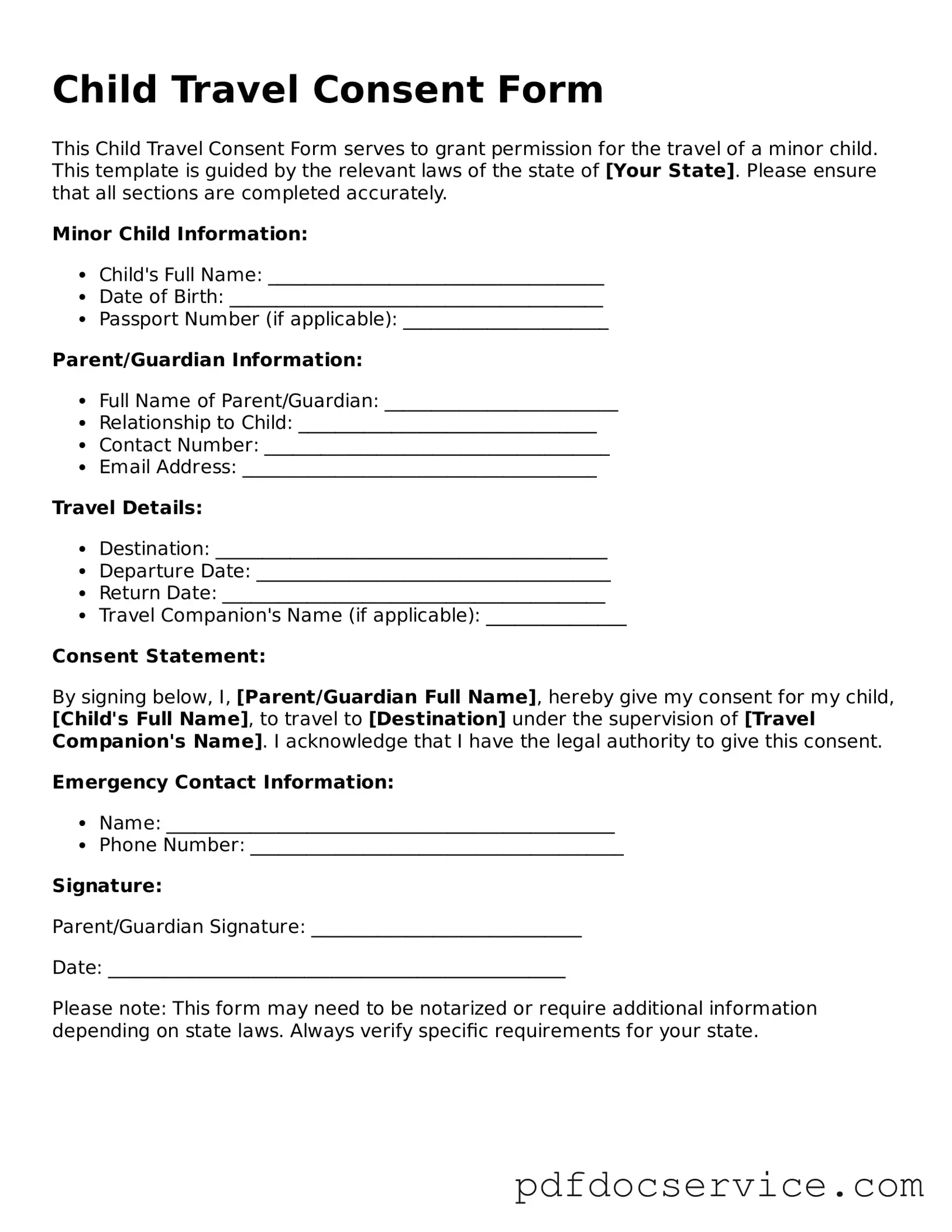When planning a trip with a child, whether it's a family vacation or a visit to relatives, ensuring that you have the proper documentation is crucial. One essential document that often comes into play is the Child Travel Consent Form. This form serves as a written agreement from a parent or legal guardian, granting permission for a child to travel with someone else, such as a grandparent, family friend, or even a travel group. It not only helps to clarify the relationship between the child and the accompanying adult but also provides proof that the adult has the legal right to take the child on the trip. In many cases, airlines, border control agencies, and other authorities may request this form to prevent potential abduction or custody disputes. Additionally, the form typically includes vital information such as the child's full name, date of birth, travel itinerary, and the contact details of the consenting parent or guardian. Understanding the importance of this document can help ensure a smooth travel experience and provide peace of mind for everyone involved.
